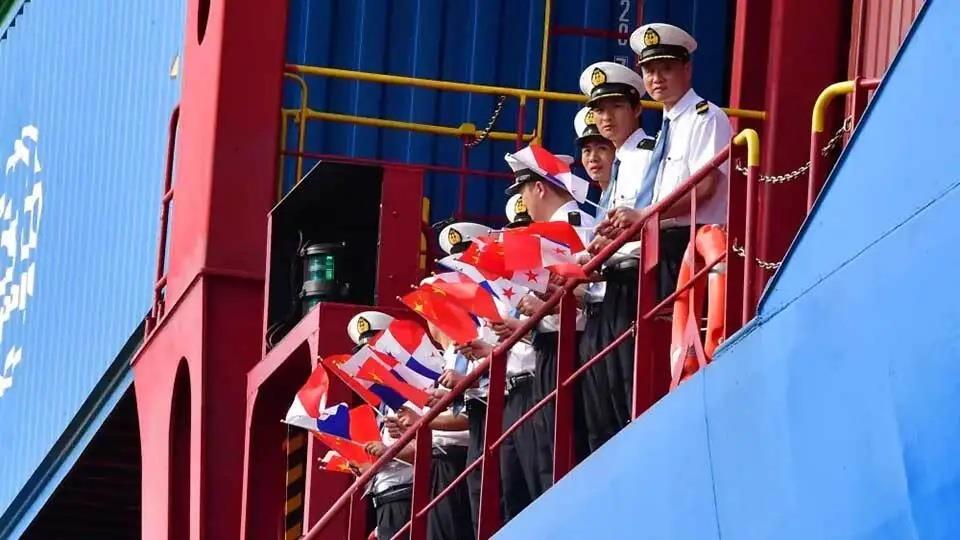
Latin America's Trade Route Battleground Between Panama And China's Bi-Oceanic Railway -
China's leadership appears to be preparing for a future in which the U.S. could restrict its access to the Canal. In their defense, this is an increasingly plausible risk amid rising tensions. In response to this, Beijing is actively looking for an alternative to the waterway and has apparently found one: the Central Bi-Oceanic Railway Corridor (CBRC). Chinese President Xi Jinping has long shown interest in transcontinental infrastructure projects. As early as 2013, he expressed interest in building a railway linking the Atlantic and the Pacific via Brazil, Bolivia, and Peru. The first feasibility studies – sponsored by China – date back to 2014. From the start, one of its main champions was Bolivian president Evo Morales and the Union of South American Nations.
By 2017, the concept evolved into the Capricorn Bi-Oceanic Corridor (CBC), a separate initiative spanning Brazil, Paraguay, Argentina, and Chile. Unlike the earlier plan, which primarily aimed to give the countries better access to China's market and resources, the CBC was ambitious and hoped to open up other markets in the Indo-Pacific, including Japan, India, and Australia. It aimed to open the South American interior to the wider Indo-Pacific region-including Japan, India, and Australia. While both projects seek to connect the two oceans, they have different objectives and supporters. The CBRC is a China-led project and is focused specifically on Chinese trade interests, whereas the CBC reflects a broader and more diverse regional push for economic integration with the Indo-Pacific. The latter effort even includes Taiwan's closest ally in the region, Paraguay.
Of the two proposals, recent developments suggest that the CBRC project is the more feasible one. The 2024 opening of the Chancay megaport in Peru marked a notable step forward for this project. During President Xi's address to the 2025 China-CELAC Forum, he remarked that“the inauguration of Chancay Port in Peru has established a new land-and-sea connectivity link between Asia and Latin America.” Since the CBRC is planned to run through Peru, the port's launch significantly enhances its logistical and strategic feasibility. From a strategic perspective, the CBRC makes sense. If built, the corridor would offer China a viable alternative to the Panama Canal and a direct route to the Pacific, sidestepping potential U.S. restrictions. However, the question remains whether it can economically compete with the Canal.
The Panama Canal, despite facing mounting issues (including droughts affecting water levels and size limitations even after its 2016 expansion) still offers unmatched efficiency in distance and scale. However, comparing the CBRC to the Panama Canal itself is misleading; it's like comparing apples to oranges. It would be more apt to compare the CBRC to the Panamanian Dry Canal – a collection of ports in the Atlantic and the Pacific that allow for trans-isthmic movement of goods through the Panama Canal Railway. When making that comparison, the Panama Canal has the economic edge over the CBRC. For example, Panama's port of Balboa port processes 2.5 million containers each year, and the Colon port complex handles nearly 5 million. In comparison, Santos, Brazil's largest port, manages up to 4.5 million containers annually, while Peru's Chancay port has a smaller capacity of 1 million containers, with plans to increase that number to 1.5 million.
Distance is another factor. The Panama Canal Railway stretches just 76.6 km, while the CBRC is a 3,750 km project. That means that the Panama route is just 2% of its potential competitor – far more efficient. Additionally, the CBRC's length means that constructing the corridor will take significantly longer, adding to the challenges of its realization. For these reasons, the Panama route remains the most economically competitive option. However, China's push for the CBRC alternative is rooted not in an economic rationale but a strategic one, informed by its geopolitical competition with the United States. The recent China-CELAC Forum and the high-profile attendance of presidents Boric (Chile), Petro (Colombia), and Lula (Brazil) demonstrated China's eagerness to engage in the battle for Latin America and the Caribbean. In a region that is rapidly becoming a focal point of great power competition, China's interest in the Central Bi-Oceanic Railway Corridor highlights Latin America's growing importance in the global struggle for supremacy, where infrastructure projects are as much about political leverage as economic gain.
Alonso Illueca is CGSP's Non-Resident Fellow for Latin America and the Caribbean.

Legal Disclaimer:
MENAFN provides the
information “as is” without warranty of any kind. We do not accept
any responsibility or liability for the accuracy, content, images,
videos, licenses, completeness, legality, or reliability of the information
contained in this article. If you have any complaints or copyright
issues related to this article, kindly contact the provider above.
Most popular stories
Market Research

- Passport Global Secures U.S. Customs License, Expands Brokerage Across All U.S. Ports
- Renowned Tech VC Backs Web3 Project At $470M Valuation
- Naoris Protocol Raises $3M In Strategic Round Led By Mason Labs
- Reddio's Exclusive Token Generation Event (TGE) And Alpha Trading On Binance Wallet - May 29, 2025
- GSR Invests In Maverix Securities To Support The Launch Of Regulated Digital Asset Structured Products
- Cregis Debuts MPC Wallet & Payment Engine At TOKEN2049, Strengthening Middle East Market Strategy





















Comments
No comment